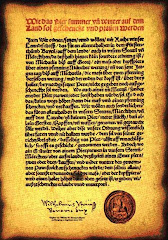
I've added some pictures a little ways down the column. You can see some places that, each in their own way, are beautiful.
The traditional, ancient town of Cahors speaks of the "Old World" of wines. Tucked away in SW France, south of Bordeaux, the region was historically well known in world commerce; there are references to wines from Cahors being on the market in London almost 1,000 years ago. There are native grapes, the most famous of which is the Malbec, whose traditional name is Cot. In Cahors, the wine from this variety is dense, tannic and all but opaque. In the past, English consumers referred to the wines of Cahors as black wine and the area produces red wines exclusively.
As a measure of how terroir influences wine production, Malbec is a blending grape in Bordeaux, although sparingly used. It comes into play in the Loire, a region not noted for ful bodied reds. And in its most famous incarnation, in Argentina, the export wine is typically fruit forward, chewy and redolent with ripe tannins.
The black wines of Cahors are made with varying maceration times as well as varying barrel aging times. There are producers who aim for the traditional big, long lasting wines that can require a decade or more of bottle aging before they are ready to drink. But in response to public demand for wines that are drinkable at an earlier age, some producers are searching for a way to retain the character of the region while having product for sale in a timely manner.
Prices for Cahors wines are premium to super premium with a name recognition issue: many consumers are OK with spending $40 0r $50 for a Bordeaux or Burgundy as they are familiar names and regions. For a good wine from Cahors to fetch the same price can be more difficult.
It remains to be seen if the area can "make it" internationally. Or will achieve a specialty status for unique and wonderful wines that take no prisoners.





No comments:
Post a Comment